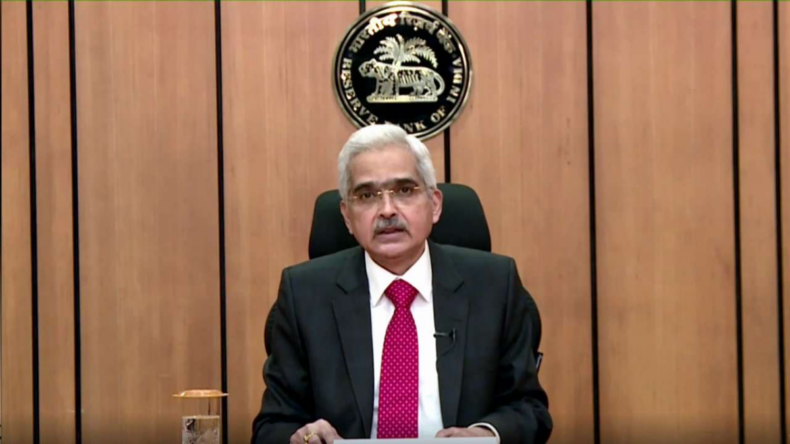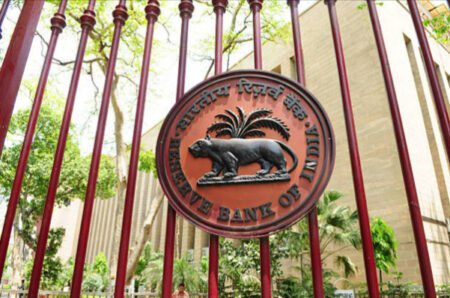RBI comes as Covid-19 infections have reduced, and the economy has recently stabilised.
The Monetary Policy Committee (MPC) kept the benchmark lending rate, repo, at 4% on December 8 and maintained its “accommodative” stance. The speed at which the Reserve Bank of India loans short-term cash to banks is known as the repo rate.
This is the eighth policy meeting in a row in which the rate-setting panel has kept the benchmark lending rate unchanged. The reverse repo rate was kept at 3.35 per cent, while the MSF rate was kept at 4.25 percent by the MPC.
The declaration was made in light of new dangers posed by the Omicron variety. Over two dozen Omicron cases have been documented in India thus far. As a result, numerous states have had to adopt new travel restrictions. The Omicron rise has sparked fears that the country would be hit by the third wave of Covid-19.
The RBI kept its GDP growth forecast for FY22 at 9.5 per cent but reduced the growth estimate for Q3FY22 to 6.6 per cent from 6.8 per cent before. According to Das, the appearance of Omicron has sparked worries of more travel and economic restrictions, resulting in “substantial uncertainty on growth dynamics” over the following months.
According to the governor, the drop in gasoline VAT will directly influence inflation, although price pressures are likely to remain in the near term. The RBI, on the other hand, anticipates a peak in headline inflation in Q4FY22, following which it would likely decline.
The highlights of the RBI MPC announcement are as follows:
- The Reserve Bank of India retains the repo rate at 4%.
- The reverse repo rate, at 3.35 percent, is likewise unchanged.
- The MPC unanimously agreed to 5:1 to keep the ‘accommodative’ position.
- The marginal standing facility (MSF) rate has remained at 4.25 percent.
- The actual GDP growth forecast remains at 9.5 percent. However, the central bank lowered Q3FY22 GDP growth to 6.6 percent from 6.8 percent before and decreased Q4FY22 GDP to 6% from 6.1 percent. Meanwhile, the RBI has reduced Q4FY22 GDP to 6% from 6.1 percent before while keeping the FY22 CPI inflation goal at 5.3 percent.
- The 5.3 percent CPI inflation goal for FY22 has been maintained. The CPI inflation goal for October-December has been updated to 5.1 percent from 4.5 percent before, while the prediction for January-March has been changed to 5.7 percent from 5.8 percent previously.
- The Q1FY23 GDP growth prediction has been kept at 17.2%; Q2FY23 GDP growth is expected to be 7.8%; Q1FY23 CPI projection has been updated to 5% from 5.2 percent Q2FY23 CPI forecast is expected to be 5%.
- Liquidity will be adjusted primarily through the Variable Reverse Repo Auction starting in January 2022. Inflationary pressures on the headline CPI are expected to peak in Q4 and then ease.
- As the “RBI remains committed to our ‘accommodative’ stance to broaden growth impulses,” a return to ordinary dispensation is proposed under the MSF Window.
- As financial conditions become more volatile and growth-inflation dynamics become more uncertain, the RBI will continue to rebalance liquidity conditions in a non-disruptive manner.
- The goal is to make the 14-day Variable Reverse Repo Rate (VRRR) the primary liquidity operation once again. The RBI plans to absorb Rs 6.5 lakh crore in the December 17 VRRR sale and Rs 7.5 lakh in the December 31 VRRR auction.
- The Reserve Bank of India retains the ability to fine-tune liquidity operations. It will enable banks to make a one-time prepayment on TLTROs that have been disclosed.
- The Reserve Bank of India will publish a discussion paper on digital payment rates.
- It will also release feature phone products based on the Unified Payments Interface (UPI).
- In addition, the UPI limit for gilts, retail, and IPOs would be raised to Rs 5 lakh.
The MPC adds that crude oil prices have decreased, consumer demand has improved, and rural demand has remained stable. The Indian economy is beginning to show signs of improvement. Since October 2021, government consumption has increased.
“We have a large cushion to deal with global spillovers, and inflation is close to target.We’re better equipped to cope with COVID-19, the unseen foe. The Omicron version has a negative impact on the home economy “Governor Das said.
The latest tax cuts on gasoline and diesel, according to Das, could assist in attracting private investment. The company financial sheet has been significantly deleveraged. The government’s focus on capital expenditures should aid in attracting private investment.
He believes that global economic activity is approaching pre-pandemic levels.













